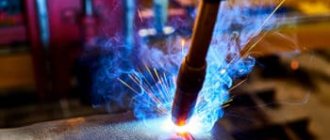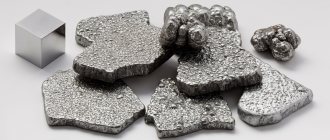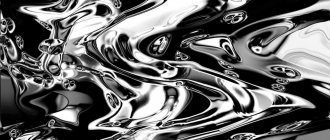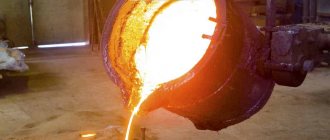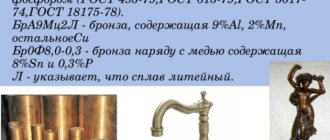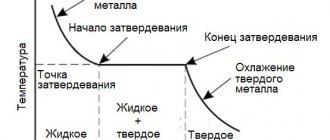Duralumin is a group of alloys based on aluminum with the addition of alloying elements (copper, magnesium, manganese, etc.). The name Dural comes from the trademark of the same name. This was the name given to one of the first aluminum alloys that was subjected to heat treatment followed by aging. The alloy was developed by German metallurgical engineer Alfred Wilm in 1903. From the moment of the discovery of duralumin to its mass production at a metallurgical plant in the German city of Duren, 6 years passed. In 1909, a new product under the brand name “duralumin” entered the market. In Russia, since the beginning of the twentieth century, this name has denoted a whole group of aluminum-based alloys. In Russian there can be various variants - “duralumin”, “dural”, “duralumin”.
Duralumin, duralumin, duralumin - the main alloying additive of these alloys is copper. The basic composition of the alloy looks like this:
- The main part is aluminum (90-94%);
- Copper 3.5-5.5%;
- Magnesium 0.5-0.8%;
- Manganese 0.6%;
- Impurities - silicon, iron, zinc, etc.
Dural is different:
- Increased strength;
- Low specific gravity;
- High temperature resistance.
Unique physical, mechanical and technological properties have made duralumin one of the most popular structural materials in the world, suitable for use in many areas of production. During the rolling process, duralumin can be given various properties - make it strong and rigid or soft and ductile.
History of the discovery of duralumin
The unique properties of the compound were discovered in 1903 by a German engineer working in the German city of Duren. The term “duralumin” comes from the name of the city. The resulting metal alloy was distinguished by increased strength and low weight, as well as other useful properties.
In 1911, at an exhibition in St. Petersburg, duralumin received a silver medal as one of the best materials for creating aircraft.
This metal became most in demand during the Great Patriotic War. It was used to make parts for weapons, aircraft and tanks.
Over time, the composition of duralumin improved, and new types of alloy appeared.
Application of duralumin
Soon after its creation, duralumin began to be used in aviation. Initially, frames for airships were made from it, and since 1920 it has become the main material in aircraft construction. The scope of application of duralumin today is much wider. Duralumin metal is resistant to extreme temperatures, which makes it indispensable for the production of aircraft and high-speed trains. Dural is used for sheathing, internal components and fasteners (bolts, rods, rivets). This structural material has high strength and wear resistance, and is easily amenable to both cold and heat treatment. Due to such indicators and relatively light weight, duralumin is in demand in aviation, astronautics, and construction; in the production of military equipment, cars and ships; for the manufacture of equipment in the food and light industries. Duralumin pipes are used in the pharmaceutical and chemical industries to create lightweight frame structures. Welding of duralumin can be done in any conditions. Rolled duralumin is used in the construction of pipelines and the laying of various communications. As a result of melting duralumin, 0.2 mm foil is obtained. This is an excellent insulating material that is used for wrapping construction products, confectionery products (sweets, chocolate), etc.
Price for duralumin per 1 kg. depends on world stock prices. Currently, about 60,000 tons of duralumin are produced in the world. In terms of production volumes, Russia ranks second after China.
Production technology
To obtain duralumin, a charge is first mixed - granules of various metals that will be fused into a single composition. Then the mixture is heated to a temperature of +500°C and sharply cooled with water or saltpeter to room temperature - hardened.
The industrial production of duralumin is based on the use of enormous power electricity.
After this, in most cases, the so-called “artificial aging” of the resulting alloy. This operation consists of additional exposure of the metal at elevated temperature for a long time, for example, at +150...+200°C for 2 hours (all conditions depend on the brand of the compound and the required qualities). The aging process is carried out to ensure that duralumin acquires special strength. Without it, the alloy is characterized by softness and pliability.
After manufacturing, the composition can be covered with a protective film that protects against corrosion.
Industrial production
For industrial production of the alloy, high-power electricity is used.
To obtain duralumin, a compound (charge) is made - these are particles of different metals; later they will be fused into a homogeneous material. After this, the component is heated to a level of +500 ° C, then sharply cooled with water or nitrate. When the temperature of the duralumin workpiece reaches room temperature, hardening is done.
Interesting: What is surface hardening of steel
Following this, the so-called “artificial aging” of the manufactured component is most often used. To do this, the material is additionally kept at high temperature for a long period: about 2 hours at +…+200° C. The process is carried out taking into account the brand of the mixture and the required properties. The aging procedure is carried out in order to obtain high strength duralumin. If this process is not applied, the metal will be soft and pliable.
Once formed, the component is sometimes coated with a protective substance that protects against corrosion.
Duralumin: composition
The main part of the alloy is aluminum. The share of this component can reach up to 94% of the total mass. The next component that is present most often is copper. The weight of other additives - manganese, magnesium, iron and others - is small.
This is interesting: What is heat treatment of metals and alloys
An example of the composition of commonly used duralumin grade D16:
- aluminum - 93-94%;
- copper - 3.8-4.9%;
- alloying alloys - 1.5-2%.
Chemical composition of duralumin.
Types and characteristics of alloys
Over time, the composition of duralumin improved, and new types of alloys appeared. They differ from each other, both in the composition of impurities and in the processing method. The most popular brand D16 has earned wide distribution due to its optimal price-quality ratio. Duralumin D16 has the following chemical composition:
- Aluminum (Al) – 91-94.7% of the total mass;
- Copper (Cu) – 3.8-4.9%;
- Silicon (Si) and iron (Fe) – 0.5% each;
- Zinc (Zn) – no more than 2.5%;
- Magnesium (Mg) – 1.8%;
- Chromium (Cr) - 0.1%;
- Manganese (Mn) – 0.9%;
- Titanium (Ti) – 0.1%.
Based on additional components and heat treatment methods, several types of compounds are distinguished:
Al+Cu+Mg (duralumin). Alloy D1 is considered a typical duralumin. This type is superior in heat resistance to many high-strength aluminum alloys, but is prone to the formation of crystallization cracks and requires additional protection against corrosion. Structural duralumin alloys D1, D16, D18, D19, VD17 are strengthened by heat treatment and are characterized by a good combination of strength and ductility.
Al+Mg+Si (avial). Alloying aluminum with magnesium and silicon increased the corrosion resistance of the alloy. After melting the base and adding alloying components, the alloy undergoes heat treatment at a temperature of about 500 degrees Celsius and sharp cooling to twenty degrees, with natural aging over several days. Thanks to this treatment, this alloy can be used under stress and in conditions of high humidity.
AMg5, AMg6 are alloys of aluminum with magnesium (magnalium), characterized by high corrosion resistance (even in sea water), ductility, and excellent weldability. They are easy to machine, weld and solder, and are well polished.
Properties of duralumin
The excellent properties of duralumin make it suitable for use in many areas of production, parts manufacturing, and insulation.
Physical and mechanical
A special feature of duralumin is its lightness with increased strength and heat resistance. Thus, the specific gravity of this metal is 2.8 g/m³, while for steel this figure is 8 g/m³. The melting point of duralumin is +500°C.
The disadvantage of the alloy is the increased susceptibility to corrosion as a result of exposure to elevated temperature or load.
Technological
A distinctive property of duralumin is the ease of its production. This alloy can be made even in domestic conditions: for example, in the garage. It does not need to be heated to extreme temperatures. Thanks to its simple manufacturing technology, this metal is relatively cheap.
The duralumin casting procedure can be done at home.
Technological properties of duralumin
Depending on the chemical composition and the manufacturing method used, the technological properties of duralumin can differ significantly. There is no GOST specification for this metal yet.
Immediately after the appearance of duralumin, it was called the most suitable material for the construction of airships and aircraft.
Among the technological properties, the following points should be noted:
- Low cost, which is determined by simple production technology. The fact that the components do not need to be heated to extremely high temperatures determines a significant reduction in the cost of the material. The cost is also favorably reflected in the possibility of carrying out production in a normal environment.
- Light weight. Considering the chemical composition, it can be noted that most of the composition is represented by aluminum. This metal is known for its lightness.
- High melting points made it possible to use duralumin alloy in the production of various elements of aircraft and other equipment. The melting point of duralumin is about 650 degrees Celsius. At the same time, ordinary aluminum melts at lower temperatures, which leads to a change in the basic technological qualities and deformation of products.
- The density of duralumin is 2.5 grams per cubic centimeter (for steel there are 8 grams per cubic centimeter). It is this indicator that determines a significant reduction in the weight of manufactured parts. This indicator can vary within a relatively small range, reaching a value of 2.8 grams per cubic centimeter.
- The static strength of duralumin is quite high, which determines its resistance to single loads. That is why the alloy is used in the manufacture of various critical parts. Conducted research indicates that it is quite difficult to destroy such material.
However, there is one drawback - relatively low resistance to high humidity. The destruction of the alloy is blocked by applying a protective coating, which slightly increases the cost of the alloy.
Duralumin parts
Duralumin D16 has become quite widespread. It demonstrates excellent performance at temperatures not exceeding 250 degrees Celsius. It is worth considering that already at a temperature of 80 degrees Celsius, signs of intercrystalline corrosion appear.
Recently, duralumin is practically not used in its pure form. This is due not only to the high probability of corrosion, but also to other disadvantages of the aluminum alloy. To improve performance today, the following improvements are being made:
- Hardening in natural conditions. When marking, the letter “T” is indicated.
- An artificial aging procedure is performed, which is also reflected in the “T1” marking.
- Anodizing and coating the surface with special varnishes (indicate the letter “A” in the marking).
A decrease in corrosion resistance occurs not only due to increased temperature, but also due to mechanical stress. That is why attention is paid to additional procedures to increase performance.
An alloy called VD95 has higher performance qualities. In addition, this type of alloy undergoes an aging procedure, due to which the potential of this type of duralumin significantly increases.
Types of alloys
Depending on the application and the need to acquire the desired characteristics, various substances are added to the alloy.
To avoid corrosion, the metal is anodized, i.e. covered with a special film.
All types of duralumin can be divided into:
- hardened, having the letter “T” in the designation;
- those that have gone through the stage of artificial aging - the designation is “T1”;
- anodized - with the letter “A” in the brand name.
Depending on the formula and heat treatment, the properties of the compounds change. Alloys widely used:
- Aluminum+copper+magnesium with manganese additives. Examples include alloys of grades D1, D16. These compounds are called "duralumin". They are not protected from corrosion and require additional coating.
- Aluminum + magnesium or manganese. In addition to corrosion resistance, this composition allows welding. The alloy is called "magnalium".
- Aluminum+magnesium+silicon. The material is protected from corrosion. It is used at high humidity, in conditions of passage of electric current. It's called "avial".
Chemical composition of the alloy
The main components of the alloy, which give it special performance qualities, are: Cu, Mn, Mg. The inclusion of other components in the alloy can affect its mechanical and technological properties. If the proportions are not observed, the alloy becomes brittle, loses its ductility, and becomes prone to cracks. The content and percentage of impurities must be strictly controlled.
- When copper in an alloy increases to 12%, its strength properties increase due to the mechanism of dispersion strengthening;
- The presence of zirconium negatively affects the alloy’s resistance to corrosion, while beryllium prevents its oxidation and increases the strength of the material;
- Silicon increases the tendency to cracks during welding and casting, and reduces the ductility of rivets. Iron in the alloy will help neutralize these negative factors if it is 1.5 times higher than the silicon content;
- Lithium reduces density but increases elastic modulus;
- The addition of chromium allows the recrystallization temperature to be increased;
- Titanium and boron are used as modifying components to refine the grain of cast metal.
The composition of the alloy may vary depending on the purpose of the material and production technology.
Areas of application
Sheets, rods, plates, and wire are made from duralumin. These materials are used to make various parts.
This is interesting: What is heat treatment of metals and alloys
Main Applications:
- Aircraft. An important area is the use of duralumin in aircraft construction and the construction of other aircraft - space rockets, airships. This composition is used to make the casing, steering rod parts, power elements, etc.
- Construction. Sheets, pipes, angles, etc. are widely used in this industry.
- Automotive industry. Bodies, radiators and other parts are made from the alloy.
- Drilling industry. Circles, drills, etc. are made from duralumin.
Duralumin is often used in everyday life, for example, in the form of baking foil or candy wrapping.
A little history
Duralumin was developed by the German scientist Wilm in 1903. The metallurgist simply mixed aluminum, copper, and silicon. From this moment until the start of mass production, only 6 years passed. In 1911, duralumin began to be used in the construction of aircraft, in particular, airships and heavy bombers. The low weight of structures with comparable strength to steel made it possible to reduce the weight of aircraft by 2-3 times. This led to a dramatic development in the aviation industry.
Basic properties of these alloys
The basic composition of the alloy includes the following substances:
- copper - up to 0.5%;
- manganese up to 0.5%;
- magnesium up to 1.2%;
- silicon and many others.
By changing the proportions of the substances used, you can change the properties of duralumin.
The strength of duralumin reaches up to 500 MPa under temporary loads and 250 - 300 under standard loads (the strength of pure aluminum is 70-80 MPa). This parameter has made duralumin a material used in many areas of industry, including high-tech ones. An alloy of aluminum with certain elements, in certain proportions, changes the resulting alloy.
Thanks to the components used in the production of duralumin, it acquires the following properties:
- strength that is comparable to certain grades of steel;
- high resistance to temperature influences. the material begins to melt at a temperature of 650 ºC.
- increased electrical conductivity. this is due to the presence of copper.
- duralumin tolerates rolling well using both hot and cold technologies.
The high technological properties of duralumin have led to high demand for it. About 60,000 thousand tons are produced in the world, almost half of which (over 30,000 thousand tons) are produced in China. Russia ranks second in terms of production volumes, metallurgical plants receive 3,580 thousand tons.
Production Features
The production of duralumin, like most alloys, is associated with a number of difficulties. Receiving duralumin occurs sequentially. At the first stage, technical aluminum is obtained and only then additives are added to it that shape its properties. At the second stage, the production of primary duralumin passes through thermal annealing, carried out at 500 ºC. This processing mode ensures the flexibility and softness of the metal. To increase strength, duralumin goes through an aging operation.
Domestic and foreign industry has mastered the production of the following types of rolled products:
- sheets and strips of different sizes GOST 21631-76;
- round and multifaceted rods according to GOST 21488-97;
- pipes of different diameters and different wall thicknesses GOST 18475-82 and GOST 18482-79;
- profiles of various section shapes.
The difference between duralumin and aluminum
Dural has a characteristic gray color. But its main differences from aluminum are the lack of ductility, hardness and fragility. The alloy cannot be bent or made a dent. Duralumin shavings are brittle and brittle. It is easy to scratch; when examining the damage, the fine-crystalline structure of the material is visible.
The type of metal can be determined more accurately by dropping caustic sodium on it. If after 10 minutes the stain darkens, it is duralumin.
Aluminum and duralumin differ from each other in their chemical composition.
Normative base
In our country, there are several GOSTs that standardize the requirements for aluminum and its alloys. One of them is GOST 4784-97 Aluminum and wrought aluminum alloys. Brands (with Changes No. 1, 2, 3, as amended). It applies to aluminum and its alloys, which are intended to produce semi-finished products of various types and shapes.
In particular, GOST determines the ratio of aluminum and other components. The same document specifies the requirements.
By the way, in the same document you can also find the names of foreign analogues, for example,
D16 can be replaced with AlCu4Mg1, and D16ch with alloy 2124.
The documents provided by the manufacturer must necessarily indicate not only the brand of the finished product, but also its chemical composition.
Advantages and disadvantages
A significant advantage of duralumin is its lighter weight than steel, despite the strength of this material. This allows it to be used in the manufacture of cars, airplanes, and rockets to facilitate construction.
An important property of duralumin is its high heat resistance, which facilitates its use in the production of radiators.
Duralumin is more resistant to vibrations than steel. Due to this, it is widely used in the manufacture of drilling equipment.
This is interesting: What is heat treatment of metals and alloys
Disadvantages include high sensitivity to corrosion. Not all types of duralumin are suitable for welding.
